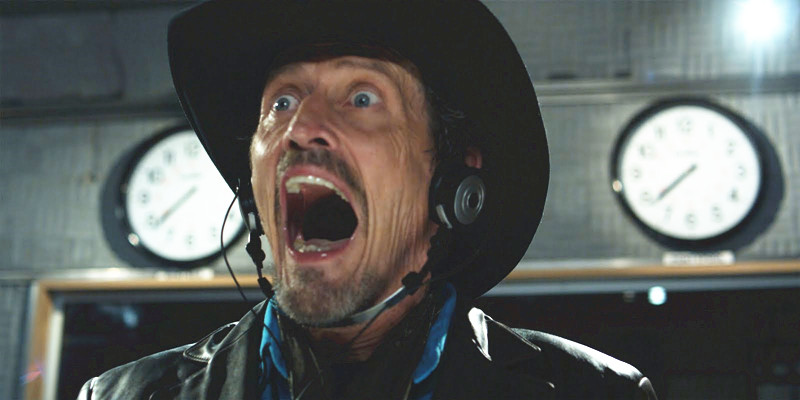
A compelling horror film needs to utilize every aspect of film language to succeed. Understanding these elements can separate a terrifying experience from something that is forced and inorganic. One of the most critical elements of any film, especially a horror film, is sound design. These are films that utilize quality sound design to amplify their story’s dread.
10. The Eyes of My Mother (2016, dir. Nicolas Pesce)
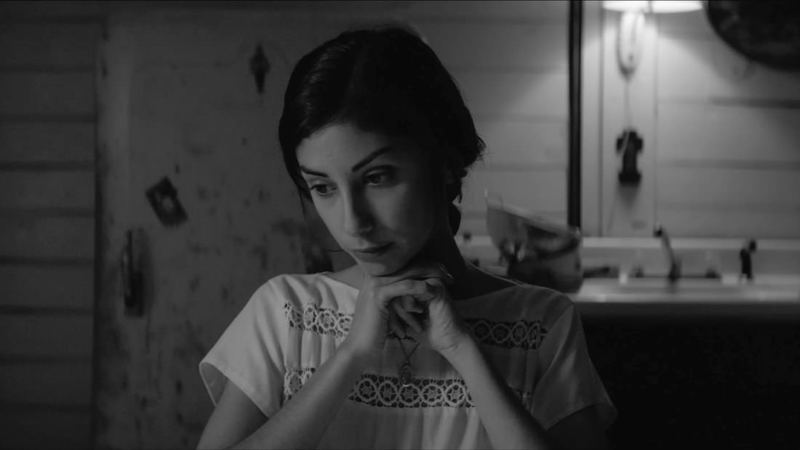
The minimalism of Nicolas Pesce’s disturbing debut is part of what makes it such a gripping horror film. He doesn’t rely on a bombastic score, nor does he insert random musical cues to indicate what is supposed to be scary. He doesn’t use jump scares, either. The result is a wholly original and authentic example of terror – one that uses the sound of wood creaking, birds chirping, a knife slicing, and even simple, casual dialogue to accentuate certain aspects of the story.
In one particular scene, a man approaches the main character’s house, where she stays with her mother. There is no indication in the sound design that anything is amiss. Yet, as the scene continues, we can tell something is wrong. The man in question seems to be slipping free from the general constraints of conversation, answering questions at an odd pace, worming his way around things he doesn’t want to detail, all while keeping an ear-to-ear smile painted on his face.
When music is used in the film, it’s added to a scene where tension is already palpable. Therefore, it works not as an indicator of horror but rather as a subtle accentuator. It adds to the tension, giving the uncomfortable dynamics within a scene that added layer of horror necessary to get us squirming.
But, for the most part, The Eyes of My Mother is an exceptionally quiet film. Its tendency to favor naturalistic sound design over a score is part of what makes it unique and terrifying in its own way.
9. Pontypool (2008, dir. Bruce McDonald)
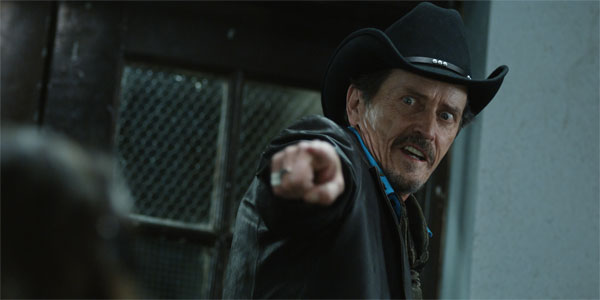
The genius of Pontypool is in its sound design. By its very nature – a zombie film set in a radio station – the film has a “radio play” quality. In fact, the film was created both to be a movie and a radio play, and it drew influence from Orson Wells’s famous War of the Worlds broadcast. Hence, a good portion of the film is focused on sound and dialogue.
On the one hand, Pontypool works because it leans into this influence and its style. So much of the film centers around these people in their radio station hearing something horrible happening. As people call in, our lead (played by the fantastic Stephen McHattie) hears desperate cries for help, among other disturbing broadcasts and pleas. These calls are crafted with precision. Everything, from the crackle of static to the actor’s vocal performance, to the soft, swelling music, drives home how incredibly disturbing the situation is. And Pontypool takes its time, not revealing its full hand until well into the second act.
On top of that, Pontypool’s real focus is language. The importance of that focus is revealed later in the film, but choosing language as a conduit for horror speaks to the film’s focus on sound design. Not every horror film would pay attention to the tiny details that Pontypool does – like how to layer these phone calls, the actors’ performances, and the score without one element superseding the other. It’d a delicate process, and one Pontypool pulls off impeccably.
8. The Others (2001, dir. Alejandro Amenábar)
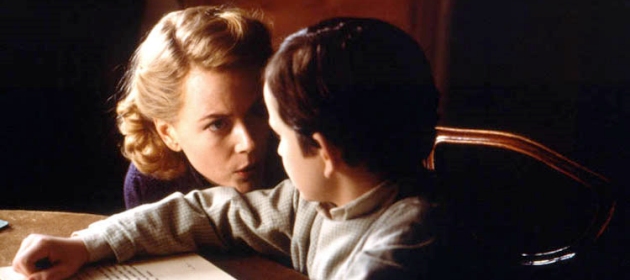
The Others is a more traditional horror film insofar as it handles its sound design. There are musical cues, jump scares, and a focus on the score and its effect on the film. Yet, that is also what helps set The Others apart from other horror movies. It pays attention to details. So yes, while it utilizes these conventional tactics (particularly when it comes to scoring jump scares), those filmmaking choices feel like a natural part of the film’s aesthetic, not a forced element attempting to create horror where there isn’t any.
Take, for example, the scene where Grace walks through the room filled with items covered by white cloth. The beginning of this scene is almost dead silent, occasionally permeated by her shoes clicking on the hardwood floor. As Grace’s paranoia escalates, along with the scene’s tension, there is a sudden noise and a swell of music, reflecting her new emotional state. In this way, the music is not trying to force horror but is used to contextualize further how Grace feels. This speaks to intelligent sound design, as the entire sequence is crafted around Grace’s deteriorating sanity more than anything else. The sound design feeds into the narrative and vice versa.
The sound design also takes on a new dimension when watching the film for a second time. Once a viewer knows the narrative and the film’s iconic twist, everything takes on a new layer of meaning – especially the whispers Grace hears while searching the house.
7. Sator (2019, dir. Jordan Graham)
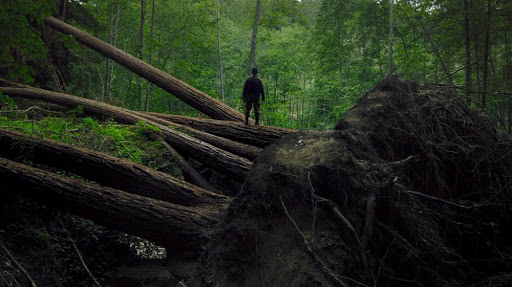
Sator is a micro-budget horror film that has generally flown under the radar. That’s a shame because it features some of the most spine-tingling sound design in horror cinema. Aside from featuring an interesting story (one that blends reality and fiction, since Nani in the film is director Jordan Graham’s grandmother, and she believed Sator was very real), the film utilizes clever filmmaking tricks to escalate the tension.
One of the most overt ways the film does this is by utilizing Nani’s actual voice recordings, where she discusses “Sator,” which have an eerie incantation-like quality. These audio clips are included throughout the film, including when our main character, Pete, sits in his log cabin looking through trail camera footage. The combination of Nani’s gravelly tone and the encroaching, almost paralyzing, darkness of the cabin creates a sense of dread that drenches the film in a unique type of suspense.
On top of that, Sator is another example of naturalistic sound design being used to escalate horror. While there is a score (one that Graham created using everything from pots and pans to a bass guitar with a violin bow), it settles comfortably in the film’s background. So, while the sound of a waterfall may not be scary, that sound combined with Graham’s score and specific shadow-laden imagery all work together to create an unsettling atmosphere.
Horror is more often about what’s not shown rather than what is, and Sator’s sound design always indicates something is there, even when the film’s imagery is more coy and elusive.
6. Lake Mungo (2008, dir. Joel Anderson)
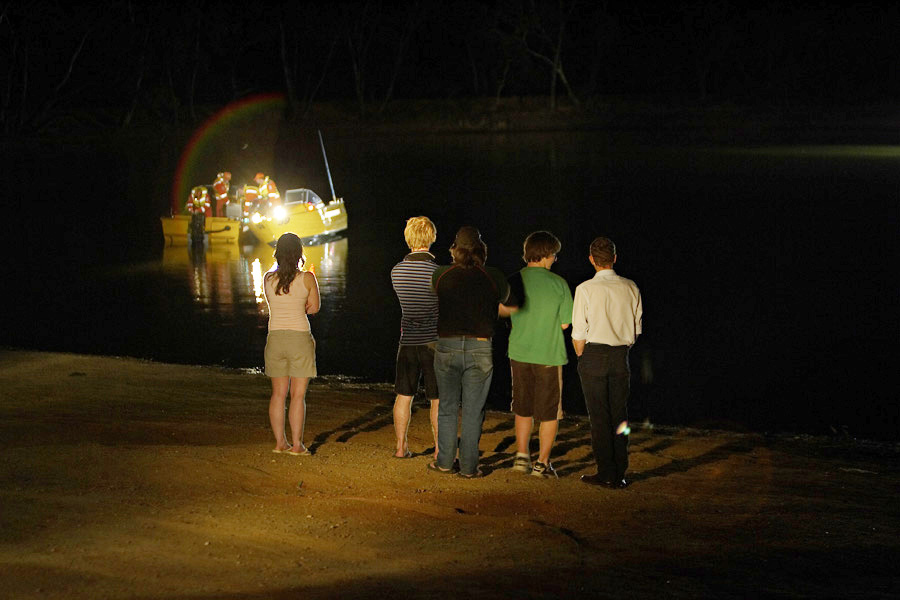
Lake Mungo is a unique film because it adopts a documentary style, and it adheres to it completely. The sound design reflects this. While some music is interspersed throughout the film, it never supersedes the performances. In fact, Lake Mungo is the perfect example of less being more in filmmaking.
So much of Lake Mungo is defined by interview-style performances, with characters talking. This footage is often interspersed with photos and videos (especially as it delves into its second and third acts). Therefore, a full-fledged score would only take away from the unsettling suspense being created within the confines of the “mockumentary” aesthetic. Anderson smartly recognized this, and he chooses specific moments to add an untraditional score, full of haunting tones and almost mechanical squeals. It’s subtle, but it almost always accompanies an unsettling visual, further escalating the viewer’s tension without hitting them over the head with musical cues.
The best sound design is that which complements its film well. No two films are alike, and every film needs its own approach to sound design. Therefore, Lake Mungo smartly molds its sound design to fit its documentary aesthetic. The result is a film that feels chillingly real and authentic.